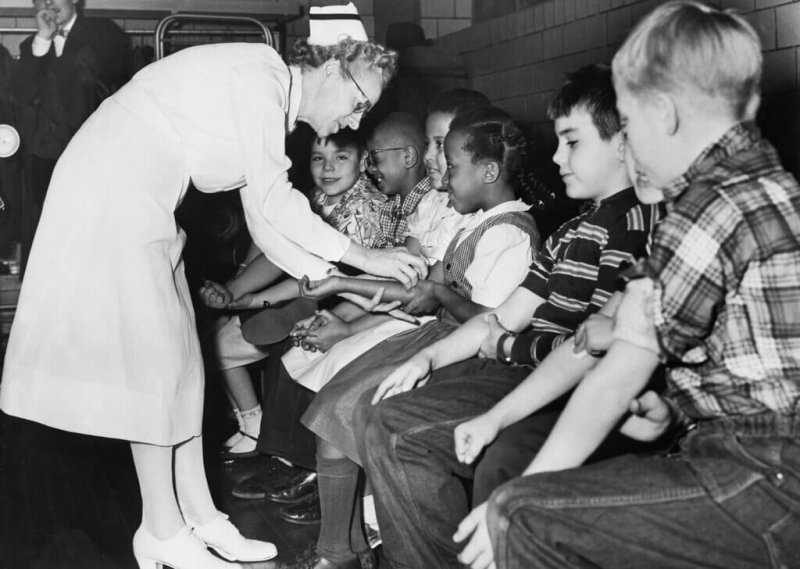On April 12, 1955, the U.S. government licensed the first vaccine against poliomyelitis, created by Dr. Jonas Salk, after scientists announced that day that it was found to be 80 percent to 90 percent effective.
…
State and local health officials were in charge of the rollout to children, who were most at risk of contracting the disease.
“Young, African-American kids were getting hit, but they were not at the top of the priority list because of the social conditions at the time,” said Dr. René F. Najera… Noting that it was difficult for parents in working-class jobs to take off time to stand in line with children at clinics, Dr. Najera said, “You see this over and over again, history kind of repeats itself.”
Shortly after the rollout began, the program was suspended after reports that children had contracted polio in the arms where they received the vaccination, rather than the legs, which was more typical of the disease.
More than 250 cases of polio were attributed to faulty vaccines, caused by a manufacturing error by one of the drugmakers.
The so-called Cutter Incident led to stronger regulatory requirements, and the vaccine rollout continued in the fall of 1955. The vaccine prevented thousands of cases of crippling illness, saved lives and ultimately ended the yearly threat of epidemics in the United States.































